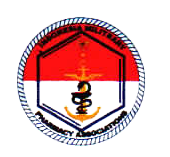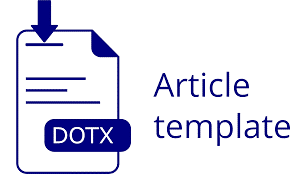THE ROLE OF PT POMI IN ENSURING ELECTRICAL ENERGY SECURITY IN INDONESIA
(1) University of Muhammadiyah Malang
(2) University of Muhammadiyah Malang
(*) Corresponding Author
Abstract
The background of this research is the need for a stable and sustainable electricity supply to support economic growth and community welfare. This research aims to examine the important role of PT Paiton Operation and Maintenance Indonesia (PT POMI) in maintaining national electrical energy security in Indonesia, based on the components of energy security according to Cherp and Jewell (2011): availability, accessibility, affordability and environmental acceptability. The method used is descriptive qualitative with a case study at PT POMI, which is supported by primary and secondary data. Primary data comes from short in-depth interviews with PT POMI Production Department Staff, and secondary data comes from PT POMI archives, government policies, as well as journal articles and books related to the topic. Qualitative analysis techniques were used in this research because they are suitable for explaining what PT POMI does to ensure national electrical energy security. PT POMI, as the operator of PLTU Paiton, ensures energy availability through substantial coal-based electricity production, with robust technical and operational strategies ensuring efficiency and reliability. Accessibility is supported by strategic partnerships with PT PLN, ensuring efficient electricity distribution to Java and Bali regions. PT POMI also emphasizes affordability by maintaining operational efficiency and engaging in CSR initiatives to support equitable access to electricity. The company's commitment to environmental acceptability is demonstrated through the implementation of clean technologies and environmental conservation programs. This comprehensive approach not only stabilizes the national energy grid but also supports sustainable practices and economic growth. The study highlights the need for ongoing investments in technology, infrastructure, and policy frameworks to further enhance energy security and sustainability.
Keywords
References
Agung, P. P., & Penanggulangan Krisis dan Pengawasan Energi Sekretariat Jenderal Dewan Energi Nasional Djoni Hartono, F. (n.d.). Pengaruh Urbanisasi terhadap Konsumsi energi dan emisi Co 2 : Analisis Provinsi di Indonesia.
ASEAN Centre for Energy. (2019). ASEAN Plan of Action for Energy Cooperation (APAEC) 2016-2025. Retrieved from https://www.aseanenergy.org/resources/publications/asean-plan-of-action-for-energy-cooperation-apaec-2016-2025/
Asian Development Bank. (2017). Indonesia Energy Sector Assessment, Strategy, and Road Map. Asian Development Bank. Retrieved from https://www.adb.org/sites/default/files/institutional-document/338021/ino-energy-road-map.pdf
Awainah, N., Sulfiana, S., Nurhaedah, N., Jamaluddin, J., & Aminullah, A. (2024). PERAN INFRASTRUKTUR DALAM MENDORONG PERTUMBUHAN EKONOMI DAN PENINGKATAN KUALITAS HIDUP MASYARAKAT. Jurnal Review Pendidikan Dan Pengajaran (JRPP), 7(3), 6847–6854. https://doi.org/10.31004/JRPP.V7I3.29285
Badan Pusat Statistik. (2020). Statistik Indonesia 2020. Badan Pusat Statistik. Retrieved from https://www.bps.go.id/publication/2020/05/26/6aa0620d0523964b02ad70da/statistik-indonesia-2020.html
Bank Dunia. (2020). Electricity prices by country. Retrieved from https://data.worldbank.org
Bappenas Percepat Pembangunan Energi Baru Terbarukan | Kementerian PPN/Bappenas. (n.d.). Retrieved July 2, 2024, from https://www.bappenas.go.id/id/berita/bappenas-percepat-pembangunan-energi-baru-terbarukan
BP. (2020). Statistical Review of World Energy 2020. British Petroleum.
BPS. (2023). Neraca Energi Indonesia 2017-2021. Bps, 1–80. https://www.bps.go.id/id/publication/2023/12/21/a4822df8ddc9b338be718e58/neraca-energi-indonesia-2018-2022.html
Buzan, B. (1991). People, States, and Fear: An Agenda for International Security Studies in the Post-Cold War Era. Harvester Wheatsheaf.
Cherp, A., & Jewell, J. (2014). The concept of energy security: Beyond the four As. Energy Policy, 75, 415-421.
Desain Mesin Terbarukan: Pengembangan Teknologi Energi Hijau. (n.d.).
Fraunhofer ISE. (2021). Public Net Electricity Generation in Germany 2020. Retrieved from https://www.ise.fraunhofer.de/en/publications/studies/public-net-electricity-generation-in-germany-2020.html
G20. (2020). G20 Energy Ministers Meeting Communiqué. Retrieved from https://www.g20.org/wp-content/uploads/2020/09/G20-Energy-Ministers-Meeting-Communique.pdf
Institute for Energy Economics and Financial Analysis (IEEFA). (2021). Indonesia’s Energy Transition: Stranded Coal Power Assets and Renewable Energy Opportunities. Retrieved from https://ieefa.org/wp-content/uploads/2021/06/Indonesia-Energy-Transition_June-2021.pdf
Institute for Essential Services Reform. (2020). Indonesia Energy Transition Outlook 2020. Institute for Essential Services Reform. Retrieved from https://iesr.or.id/en/pustaka/indonesia-energy-transition-outlook-2020
International Energy Agency (IEA). (2019). World Energy Outlook 2019. International Energy Agency.
International Renewable Energy Agency (IRENA). (2019). Renewable Energy and Jobs – Annual Review 2019. International Renewable Energy Agency.
International Renewable Energy Agency. (2017). Renewable Energy Prospects: Indonesia, a REmap analysis. International Renewable Energy Agency. Retrieved from https://www.irena.org/publications/2017/Mar/Renewable-Energy-Prospects-Indonesia
IRENA. (2019). Renewable Energy and Jobs – Annual Review 2019. International Renewable Energy Agency.
Kahi, M., Kahfi, M., & Soesanto, E. (2023). STUDI KEBIJAKAN-KEBIJAKAN SEKTOR MIGAS DIINDONESIA. Jurnal Mahasiswa Kreatif, 1(4), 93–106. https://doi.org/10.59581/JMK-WIDYAKARYA.V1I4.682
Kementerian Energi dan Sumber Daya Mineral (ESDM). (2020). Statistik ESDM 2020. Retrieved from https://www.esdm.go.id/assets/media/content/content-statistik-esdm-2020.pdf
Kementerian Energi dan Sumber Daya Mineral. (2020). Handbook of Energy & Economic Statistics of Indonesia 2020. Kementerian Energi dan Sumber Daya Mineral. Retrieved from https://www.esdm.go.id/assets/media/content/content-handbook-of-energy-and-economic-statistics-of-indonesia-2020.pdf
Kusuma, H. (2018). MODEL KETERKAITAN WILAYAH EKONOMI DI DALAM INDONESIA PENENTUAN PUSAT. Seminar Nasional Dan Call for Paper III Fakultas Ekonomi, 0(0), 189–198. https://seminar.umpo.ac.id/index.php/SEMNASFEUMPO/article/view/18
METI Japan. (2020). Japan-Indonesia Cooperation on Renewable Energy. Retrieved from https://www.meti.go.jp/english/press/2020/0610_001.html
Ministry of New and Renewable Energy. (2020). Annual Report 2019-20. Government of India. Retrieved from https://mnre.gov.in/img/documents/uploads/file_f-1585125488675.pdf
Mukminin, M. A. (2022). Perancangan Resort Pada Kawasan Rawan Bencana Banjir Dengan Pendekatan Resiliensi Struktur Arsitektur Pangkalan Bun, Kalimantan Tengah Design Of Resort In Flood Disaster Areas With Structural Resilience Approach Of Pangkalan Bun Architecture, Central Kalimantan. https://dspace.uii.ac.id/handle/123456789/38772
Zaemi, F. F., & Rohmana, R. C. (2021). Prosiding Seminar Nasional Teknik Lingkungan Kebumian Ke-III Carbon Capture, Utilization, and Storage (CCUS) untuk Pembangunan Berkelanjutan: Potensi dan Tantangan di Industri Migas Indonesia. Fakultas Teknologi Mineral.
PLN. (2021). PLTS Terapung Cirata Akan Jadi yang Terbesar di Asia Tenggara. Retrieved from https://web.pln.co.id/media/siaran-pers/2021/05/plts-terapung-cirata-akan-jadi-yang-terbesar-di-asia-tenggara
PLTU Paiton Berhasil Pasok Kebutuhan Listrik KTT G20 Dengan Biomassa. (n.d.). Retrieved July 4, 2024, from https://pasardana.id/news/2022/7/12/pltu-paiton-berhasil-pasok-kebutuhan-listrik-ktt-g20-dengan-biomassa/
Presidential Regulation No. 22/2017. (2017). Peraturan Presiden Republik Indonesia Nomor 22 Tahun 2017 tentang Rencana Umum Energi Nasional. Retrieved from https://peraturan.bpk.go.id/Home/Details/72319/perpres-no-22-tahun-2017
PT PLN. (2021). RUPTL 2021-2030. Retrieved from https://web.pln.co.id/statics/uploads/2021/10/ruptl-2021-2030.pdf
REN21. (2020). Renewables 2020 Global Status Report. REN21. Retrieved from https://www.ren21.net/reports/global-status-report/
Sagena, U. W., & Hasyim Mustamin, M. (n.d.). Memahami Konsep Keamanan Energi: Antara Pendekatan Tradisional dan Non-Tradisional.
Sebyar, M. H., & Wulandari, M. A. (2023). KESENJANGAN SOSIAL EKONOMI DI MASYARAKAT SEKITAR PERKEBUNAN KELAPA SAWIT DI KABUPATEN TANJUNG JABUNG BARAT PROVINSI JAMBI. JURNAL AGRIMANSION, 24(3), 744–785. https://doi.org/10.29303/AGRIMANSION.V24I3.1584
Sovacool, B. K., & Mukherjee, I. (2014). Conceptualizing and measuring energy security: A synthesized approach. Energy, 36(8), 5343-5355.
Syamsuddin, N., Yana, S., Studi Manajemen, P., Ekonomi, F., Serambi Mekkah, U., & Aceh Indonesia, B. (2023). Permintaan Pasar untuk Produk dan Layanan Energi Terbarukan (Perspektif Daya Saing Energi Terbarukan Indonesia). Jurnal Serambi Engineering, 8(1). https://doi.org/10.32672/JSE.V8I1.5673
U.S. Energy Information Administration. (2020). U.S. Crude Oil Production. Retrieved from https://www.eia.gov/dnav/pet/hist/LeafHandler.ashx?n=PET&s=MCRFPUS2&f=M
World Bank. (2019). Indonesia Economic Quarterly: Investing in People. World Bank Group. Retrieved from https://www.worldbank.org/en/country/indonesia/publication/indonesia-economic-quarterly-december-2019-investing-in-people
DOI: https://doi.org/10.33172/jp.v10i3.19635
INDEXED BY:
Office Address:
Lembaga Penelitian dan Pengabdian Kepada Masyarakat
Republic of Indonesia Defense University
Jl. Salemba Raya No.14, Paseban,Jakarta Pusat, Daerah Khusus Ibukota Jakarta 10440, Indonesia
Email: jurnal.unhan@idu.ac.id

Jurnal Pertahanan: Media Informasi tentang Kajian dan Strategi Pertahanan yang Mengedepankan Identity, Nasionalism dan Integrity is licensed under a Creative Commons Attribution-NonCommercial 4.0 International License.




